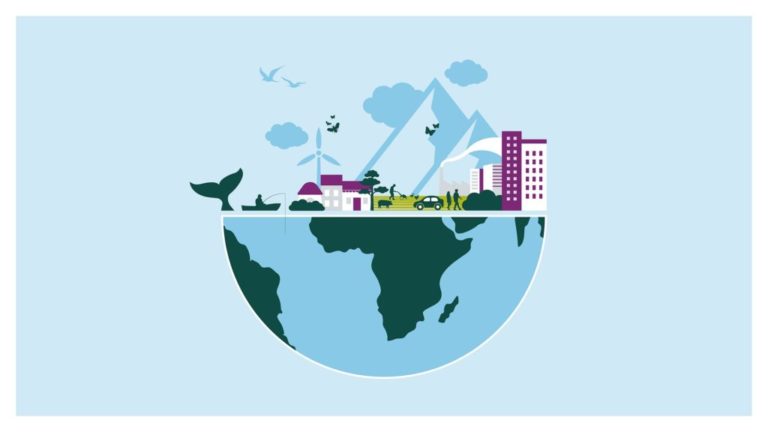Rising climate changes across the world have posed a great threat to all living kinds across the globe. In the span of one year we have seen it all, from the raging wildfires in Australia to the unforgiving winter storms in Texas. Most countries in south Asia are witnessing rising sea levels, one of the most vulnerable south Asian nation is Bangladesh given its low elevation it faces a boom in migration crisis in the near future. At the same time, India is facing glacier bursts, torrential rains and extreme flooding due to changing patterns in the monsoon weather. Globally, these environmental changes are shaping human migration, particularly through their intersection with other economic, political and social drivers of mobility.1 The impacts of such extreme events increase the victims of climate displacement and poses a great risk to the global economy. Most of the world now faces the risk of where and how we survive. To make that decision we heavily depend on when and who is the next victim of a disastrous climate tragedy.
Who is a climate refugee?
In the midst of a climate emergency, people who flee their homes in search of safety, food, shelter, economic and financial stability are climate refugees. This rises the number of people displaced from their original homes to a newer place ultimately. The effects of adverse climatic events have displaced humans globally mostly within country borders although research indicates cross-country migration as well. But it is not easy, victims displaced in a population due to climate disasters often face multiple challenges post trauma and take longer time to settle down to their pre disaster levels. Climate induced migrants eventually face difficulty in procuring resources and starting a life in a new environment. The concept of human mobility and migration due to climate related disasters is on the rise but the question is how it affects global health.

“We are the first generation to feel the effect of climate change and the last generation who can do something about it.”
Barack Obama, Former US President

How does climate change influence health?
Exposure to adverse weather changes greatly influences health outcomes. Communities forcibly choose to migrate on a large scale and the incoming consequences after displacement largely influences wellbeing.
Firstly, climate related displacements challenges both the host and the home communities. The four major dimensions it influences are social, economic, physical and mental health. It also exposes the harmful consequences of consuming unsafe drinking water, food scarcity leading to rise in diarrhea and malnutrition contributing to morbidity and mortality. Furthermore, environment migrants initially live in makeshift overcrowded homes a major risk factor for conflicts and infectious vector borne diseases. However not all migrations are a challenge of survival, communities adapt and grow in their newfound spaces leading a healthy life to full capacity.
As with refugees, many of the places that will receive climate-change– affected migrants are in developing regions where public health resources are lacking or inadequate.3 Thus forced displacements exposes the vulnerability of worse health outcomes in the young, pregnant and the elderly. A rise in infectious disease mortality and a high incidence of nutritional deficiencies make the displaced more prone to disability and death. In addition, the burden of mental health impacts go unaddressed in such events. Lastly, setting up of primary care for such camps can be a challenging task in low to middle-income countries with malfunctioning ill-developed healthcare systems.

Apart from this, there is loss of life facing sudden weather changes, physical injuries, loss of livestock, disruption to other social and economic activities, extensive damage to housing, property and infrastructure further leading to poverty and impoverishment. Loss of work in high calamity prone areas leads to financial stress and oftentimes scales up mental illnesses, suicides, conflicts and crime rates. Given the rapid changes in climate, the relocation of many human settlements can be challenging to all working governments across the world.
Economic influences of climate displacement are enormous. The highest burden lies in Bangladesh, China, India, U.S and the Philippines with the highest disaster related displacement figures. The intense climate conditions have triggered 24.9 million new displacements across 140 countries and territories in 2019 three times higher than the numbers produced due to conflicts and violence.

Statistic reports across south Asia recorded 9.5 million disaster displacements in 2019, due to floods, monsoon rains and cyclones Fani and Bulbul in India and Bangladesh uprooting millions from their homes compared to minute displacement in the Europe. However, exact numbers are difficult to evaluate due to lack in country wise databases and the limited literature & research in this upcoming crisis.
In an attempt to avert the ongoing crisis, many governments are now working with international stakeholders in collaboration to propose displacement management, policy and framework concerning climate and environmental degradation. In a combined effort to reduce climate refugee settlements by disaster training, environment friendly market, goods & services, relocation guides, minimizing environmentally hazardous growth in social and economic sector. Multiple non-profit organisations work towards the same cause, calling for protection of those displaced, vulnerable and prone.
“Climate change is the single greatest threat to a sustainable future but, at the same time, addressing the climate challenge presents a golden opportunity to promote prosperity, security and a brighter future for all.”
Ban Ki-Moon, Former Secretary-General of UN
References
- Foresight: Migration and Global Environmental Change. Migration and Global Environmental Change: Future Challenges and Opportunities. London: The Government Office for Science; 2011
- Schwerdtle, P., Bowen, K. & McMichael, C. The health impacts of climate-related migration. BMC Med 16, 1 (2018). https://doi.org/10.1186/s12916-017-0981-7
- Carballo M, Smith C, Pettersson K.. 2008. Climate change and displacement: health challenges.Forced Migr Rev31:32-33


